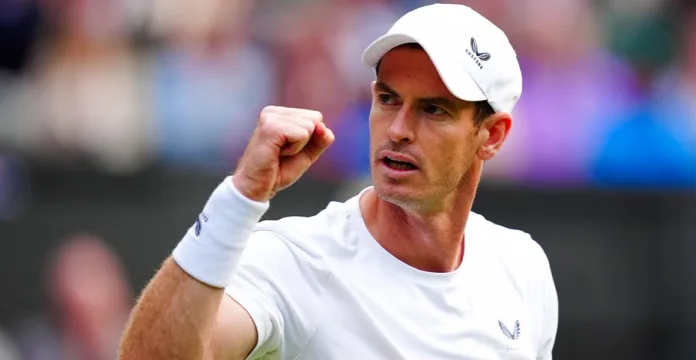Following his retirement from tennis at the Paris Olympics, Andy Murray hints at a new sporting interest, revealing his enjoyment of golf in recent social media updates
Andy Murray, the renowned British tennis player, has signalled a new chapter in his life by diving into golf after retiring from professional tennis. The 37-year-old announced his departure from the sport earlier this month, concluding his career with a final match at the Paris Olympics where he and Dan Evans fell short in the doubles quarter-finals.
Murray’s retirement marked the end of a remarkable era. Despite facing fierce competition from contemporaries like Novak Djokovic, Rafael Nadal, and Roger Federer, Murray distinguished himself with three Grand Slam titles and two Olympic gold medals. His final tennis match did not offer the storybook conclusion many had hoped for, but his legacy remains firmly established in the annals of the sport.
Embed from Getty ImagesIn the wake of his retirement, Murray has been notably discreet about his future plans. However, a recent update on his X (formerly Twitter) profile hints at a new passion. His bio now reads, “I played tennis. I now play golf,” a succinct declaration of his shift in focus. Additionally, Murray has updated his cover photo on the platform to a picturesque golf course, further signalling his new interest.
Murray has expressed a desire to excel in golf, mentioning before the Olympics his goal of becoming a ‘scratch golfer,’ a term used to describe a golfer with a zero handicap. While the transition from tennis to golf is significant, Murray’s competitive spirit and discipline suggest he will approach this new challenge with the same dedication that marked his tennis career.
In a recent interview with The Sunday Times, Murray shared his thoughts on future endeavours, including punditry. He admitted that his previous experiences in this role did not fully satisfy him, citing a lack of engaging debate in the analysis of sports. Instead, Murray has expressed an appreciation for football’s dynamic discussions and differing viewpoints.
Despite the lack of a fairy-tale ending to his tennis career, Murray’s accomplishments speak volumes. His victories include his breakthrough Grand Slam win at the 2012 US Open, triumphs at Wimbledon in 2013 and 2016, and two Olympic golds in 2012 and 2016. Each of these achievements contributes to his stature as one of the greatest tennis players of his generation.
Analysis:
Andy Murray’s retirement from tennis and subsequent shift to golf highlights several dimensions of his career transition and broader societal implications.
Political Perspective:
Murray’s retirement and career shift come at a time when sports personalities increasingly influence public and political discourse. As an iconic figure, his move from tennis to golf might inspire discussions on athlete career transitions and support systems. Politically, it emphasizes the need for policies that assist retired athletes in navigating life after professional sports, ensuring their well-being and continued engagement in new pursuits.
Social Perspective:
Murray’s transition reflects broader societal themes of reinvention and adaptation. For many athletes, retirement marks the beginning of a new phase in life, often involving exploring new interests or careers. Murray’s openness about his new passion for golf could resonate with individuals undergoing similar transitions, offering a relatable narrative about pursuing new goals and finding fulfilment beyond one’s primary career.
Racial Perspective:
Although not directly linked to racial issues, Murray’s retirement and career change can still influence discussions on diversity in sports. As a prominent figure in tennis, his shift to golf—a sport with its own diversity challenges—could potentially impact efforts to make golf more inclusive. Murray’s involvement in golf might inspire increased diversity initiatives within the sport, contributing to a broader dialogue on representation and access.
Gender Perspective:
Murray’s move to golf highlights issues related to gender representation in sports. While golf is traditionally male-dominated, Murray’s presence could help break down barriers and encourage more inclusive participation. His transition can also serve as a catalyst for discussions on gender equality in sports, particularly in terms of support for women athletes and equal opportunities across different sports.
Economic Perspective:
Economically, Murray’s career change could have implications for sports endorsements and marketability. His shift to golf might open new avenues for sponsorship and brand partnerships, affecting both his personal financial landscape and the broader sports marketing industry. Additionally, his involvement in golf could stimulate interest in the sport, potentially impacting its economic dynamics by attracting new players and fans.
In summary, Andy Murray’s transition from tennis to golf underscores significant themes of adaptation and new beginnings. His journey reflects broader social, political, and economic currents, offering insights into athlete career transitions and the evolving landscape of sports.
